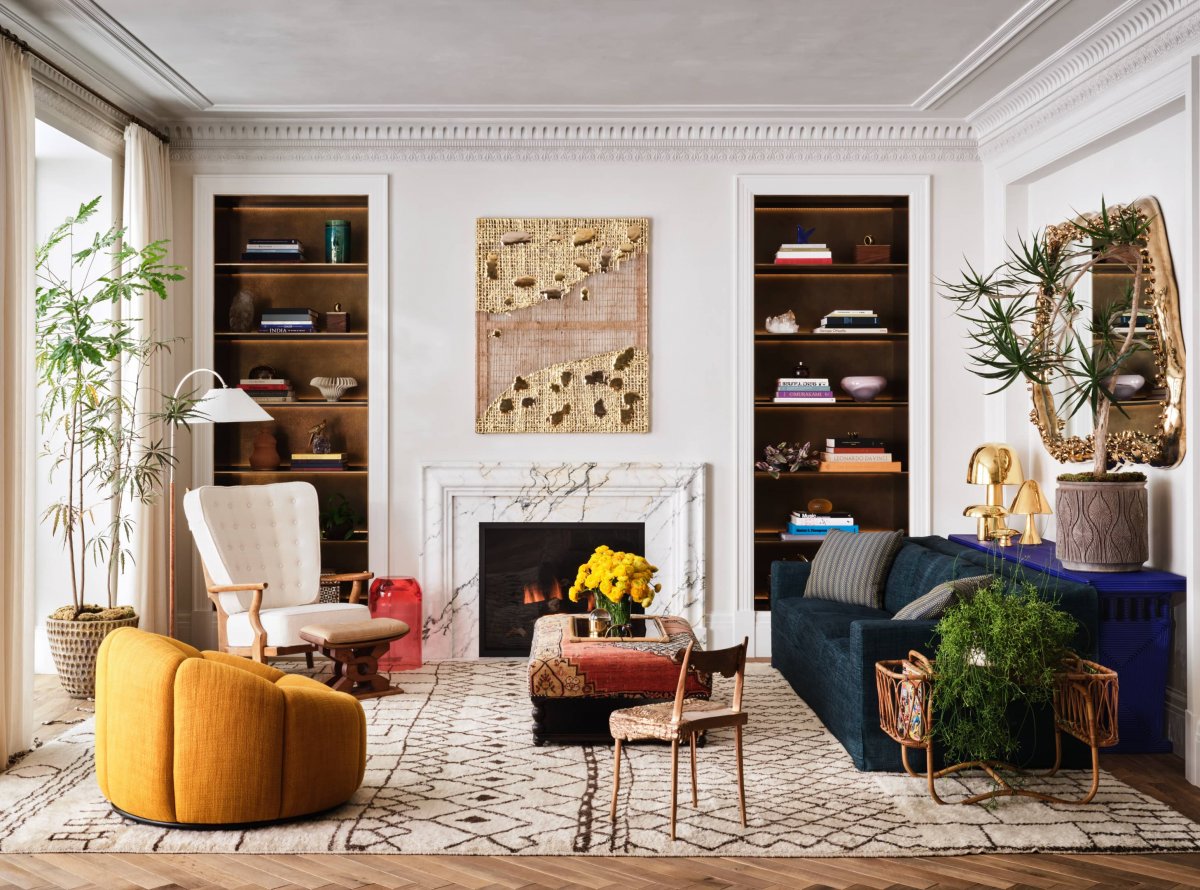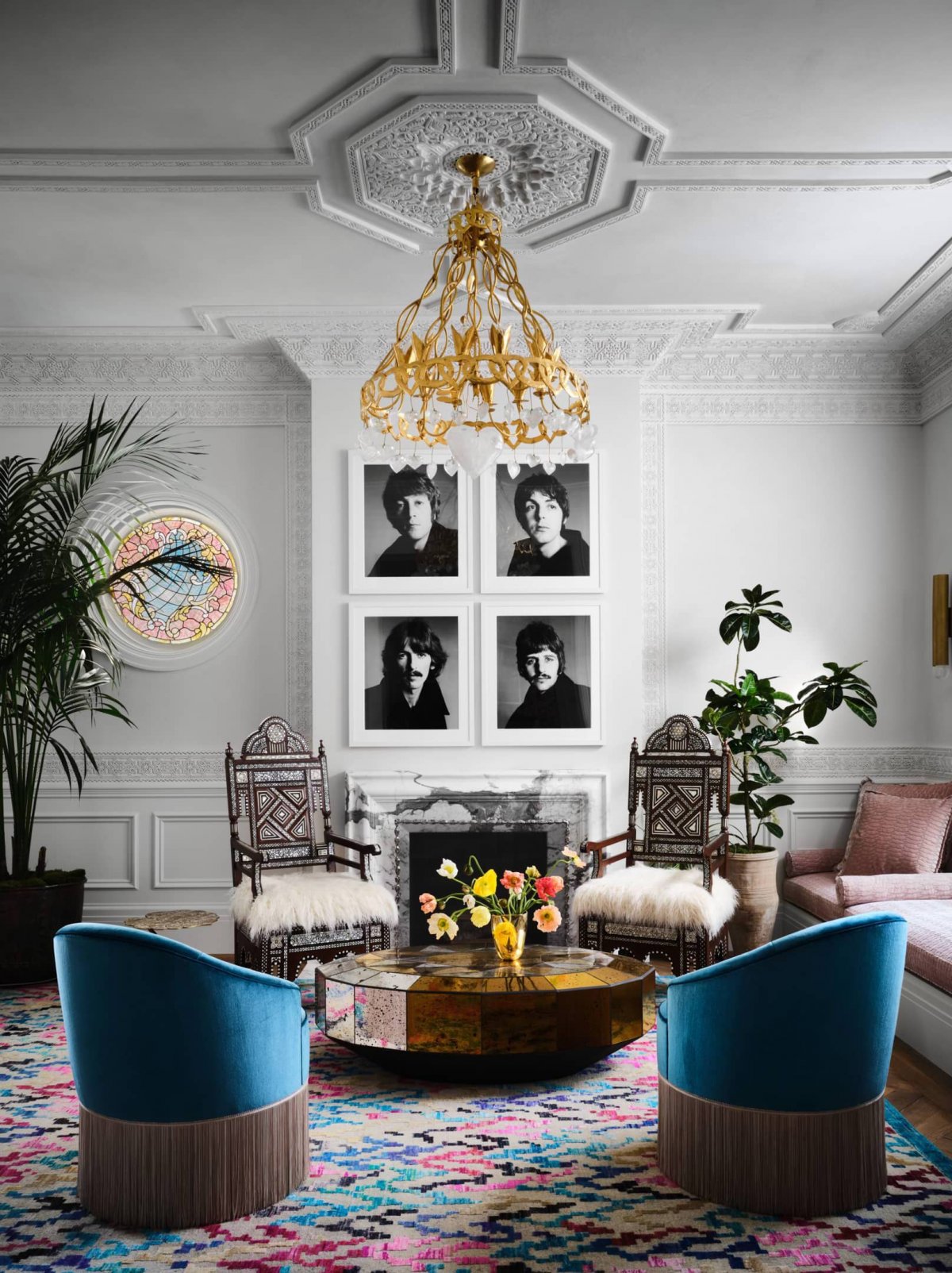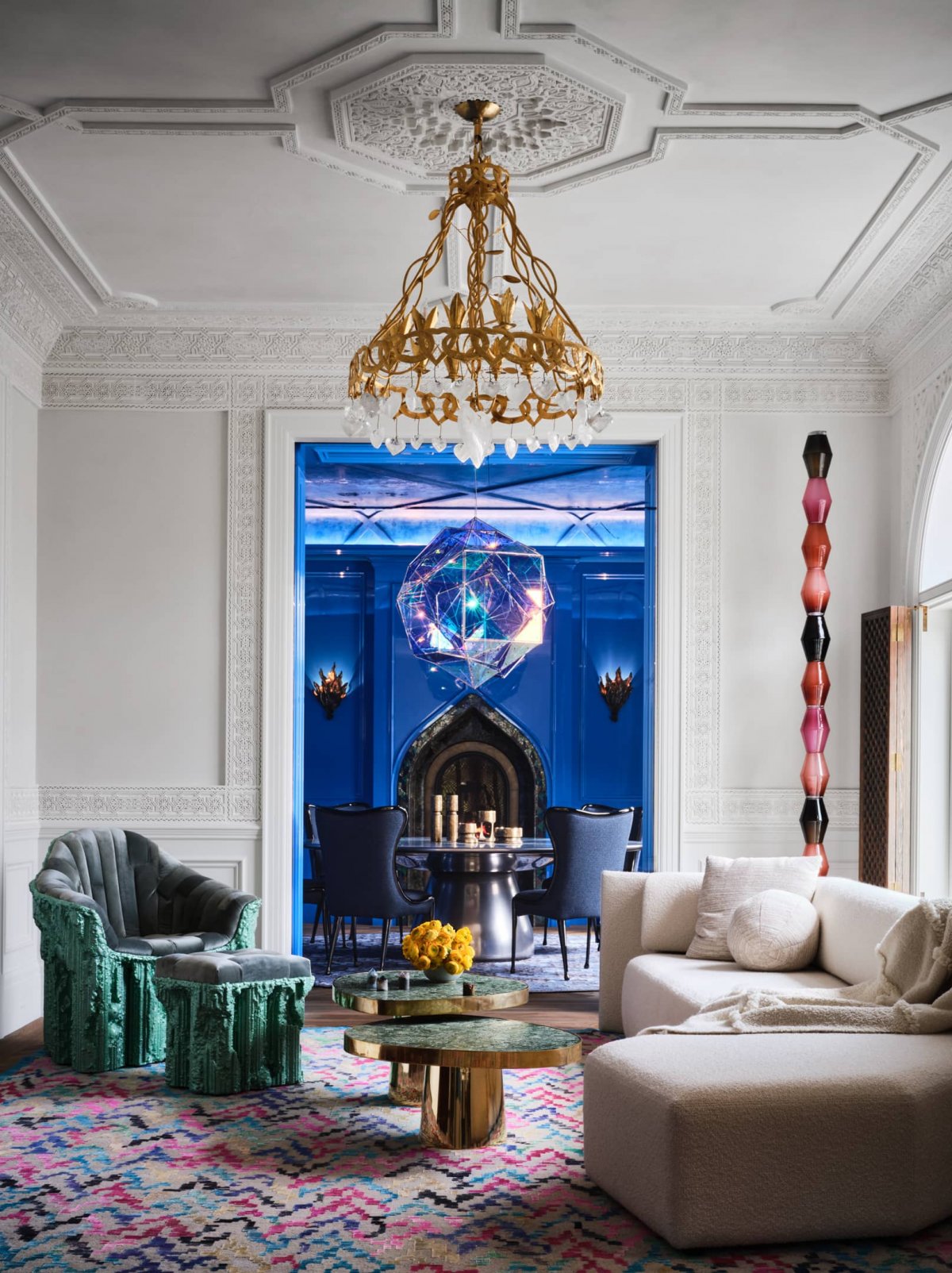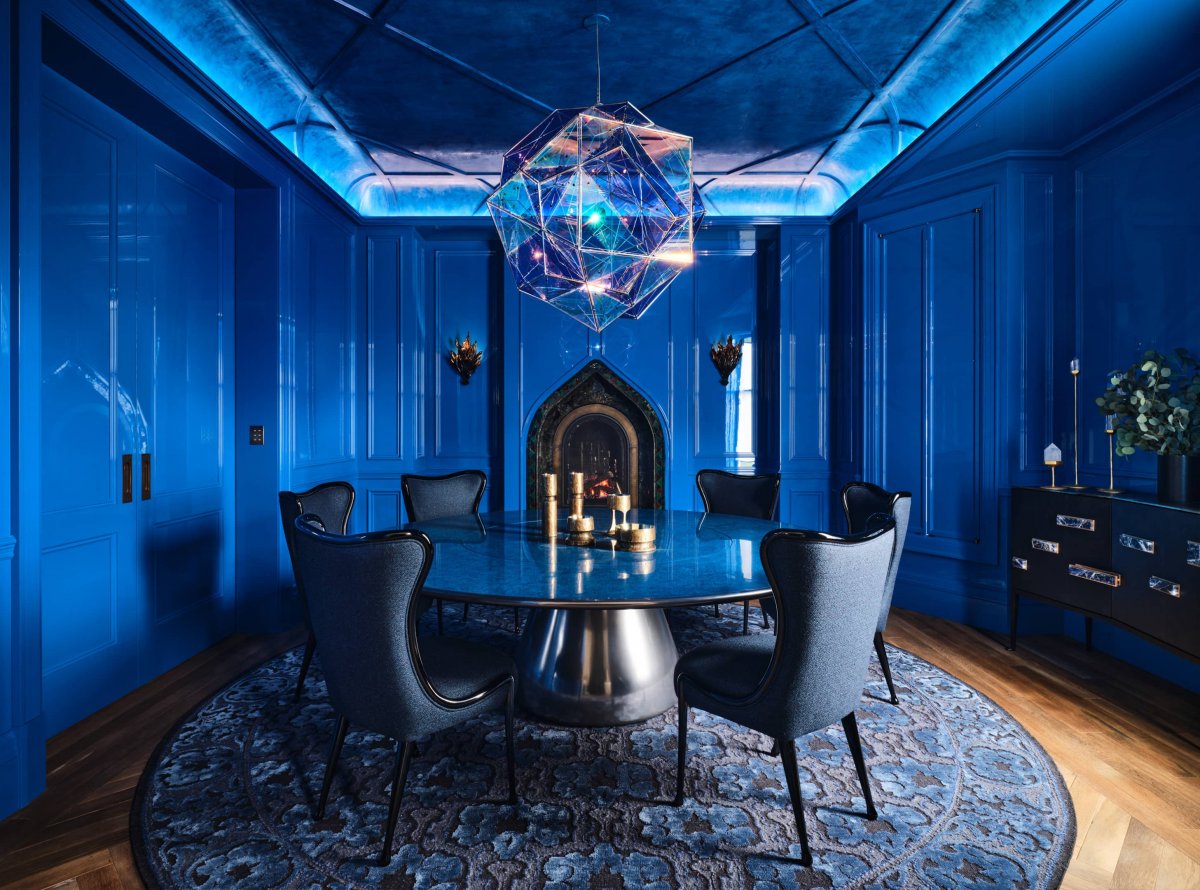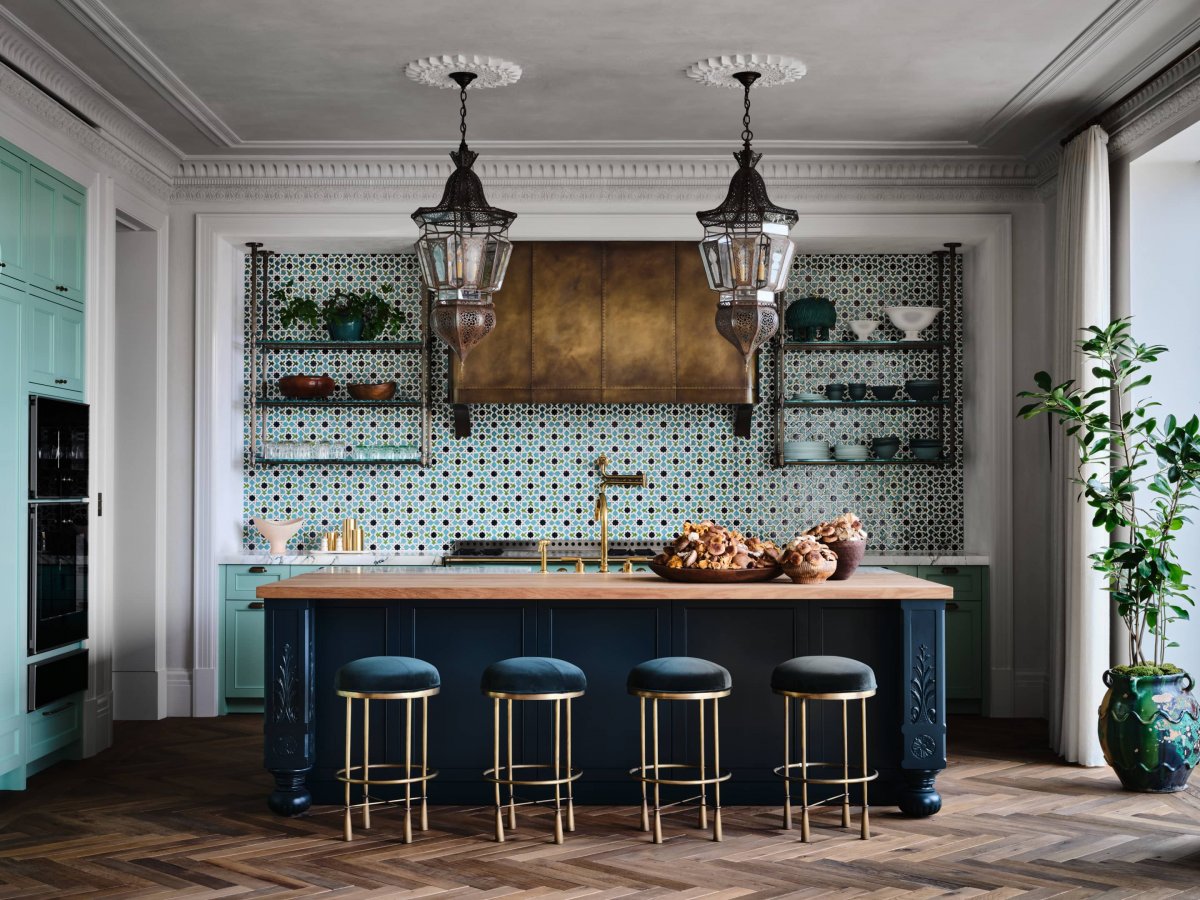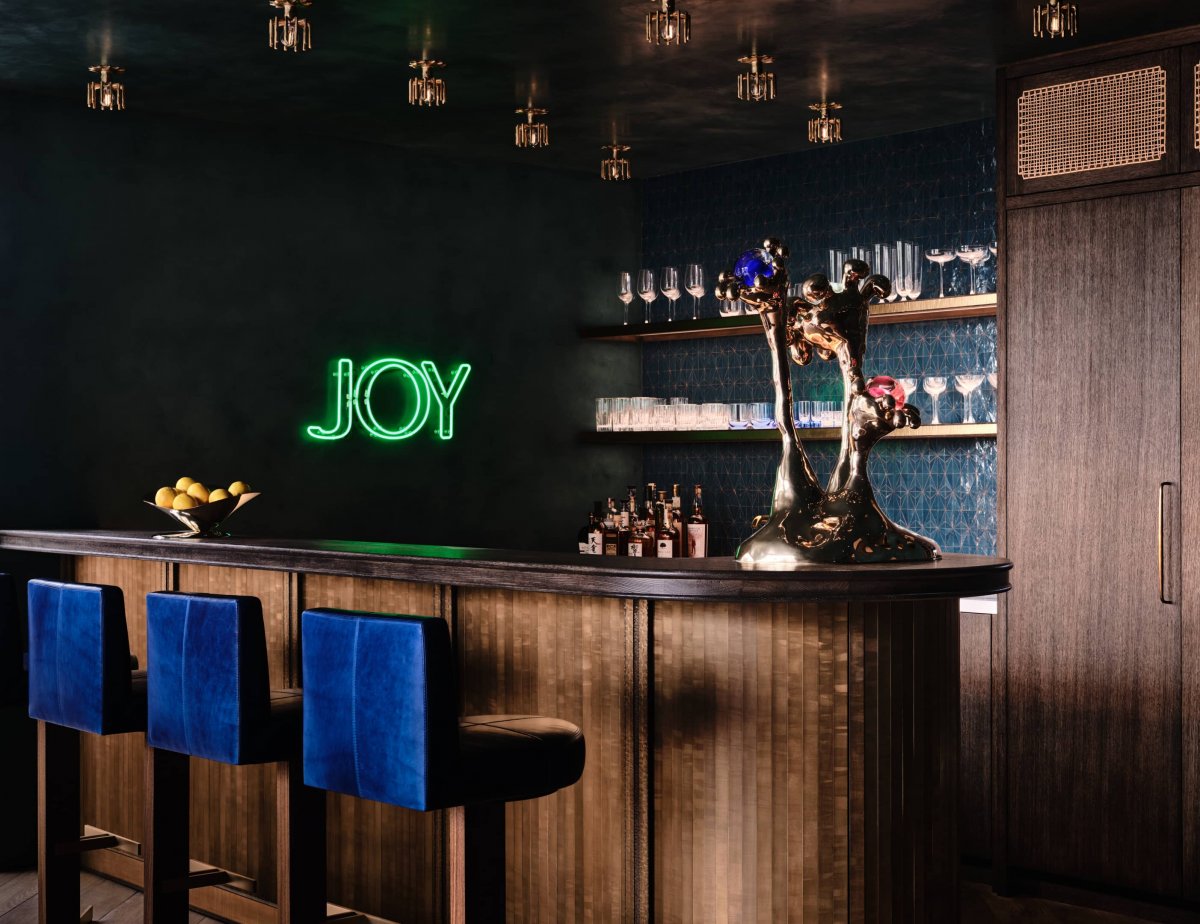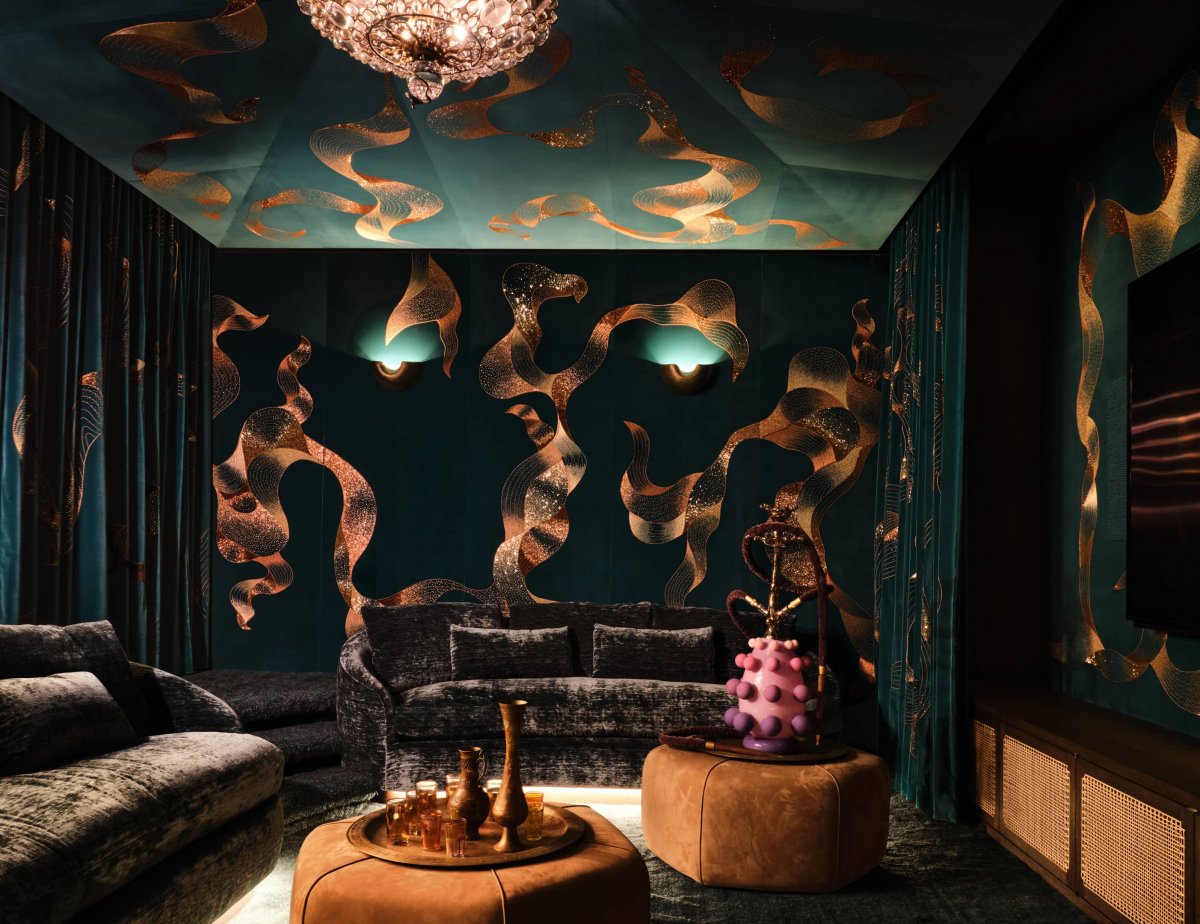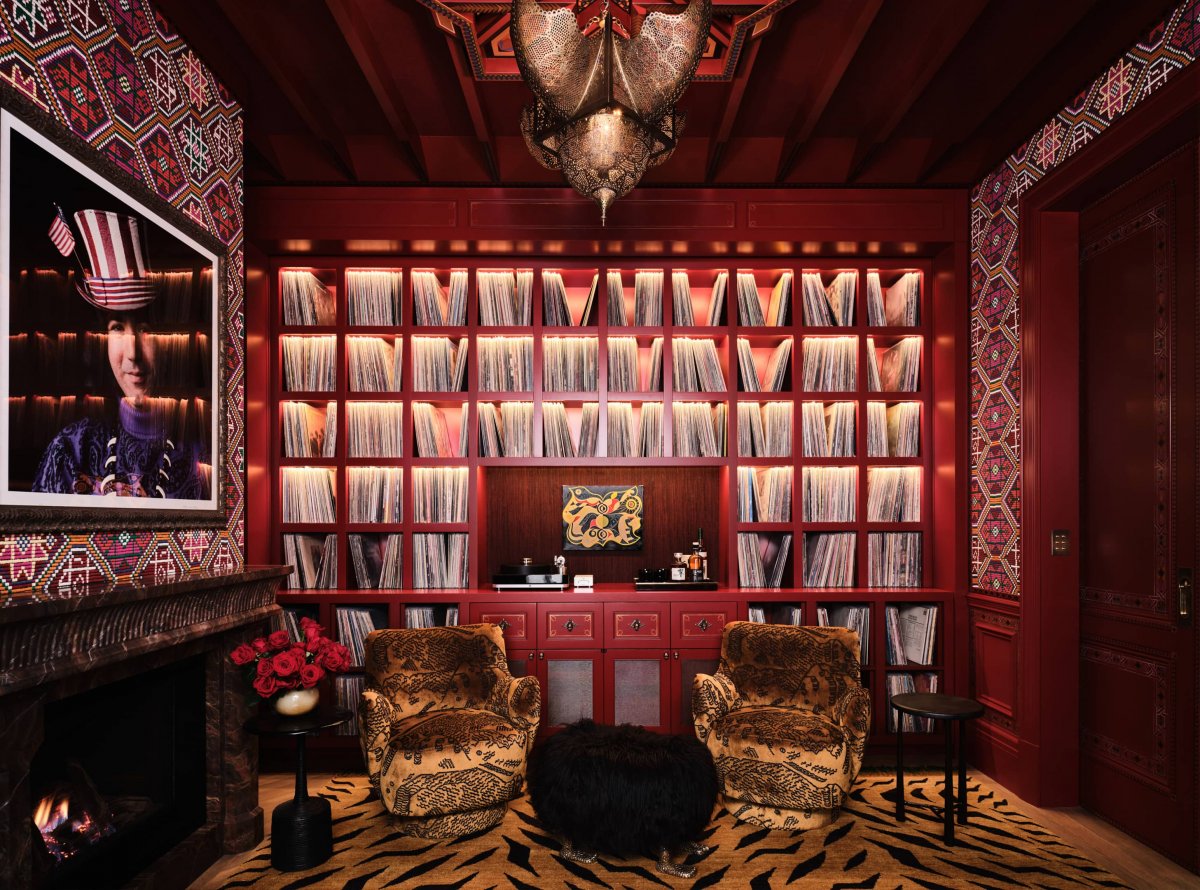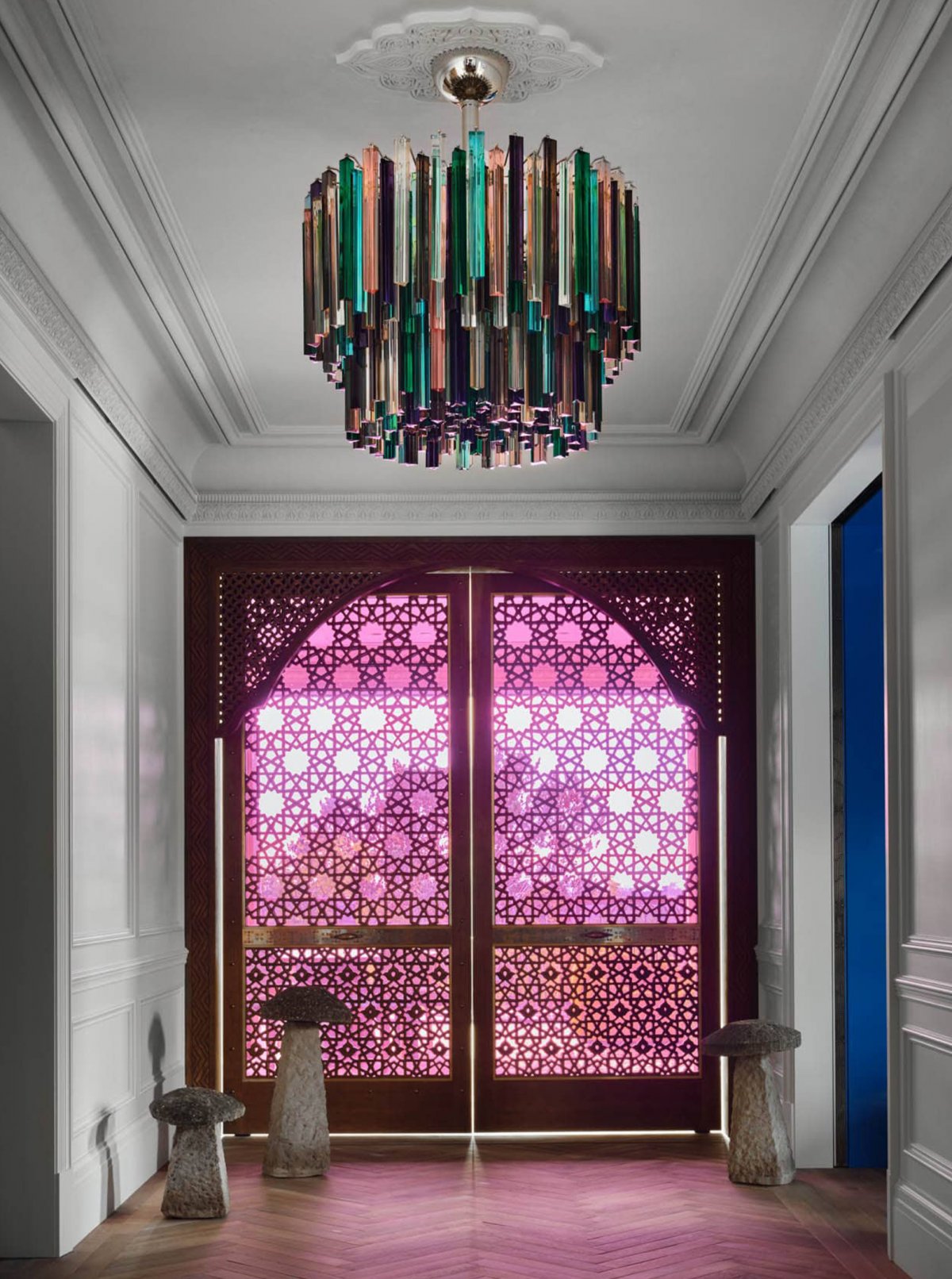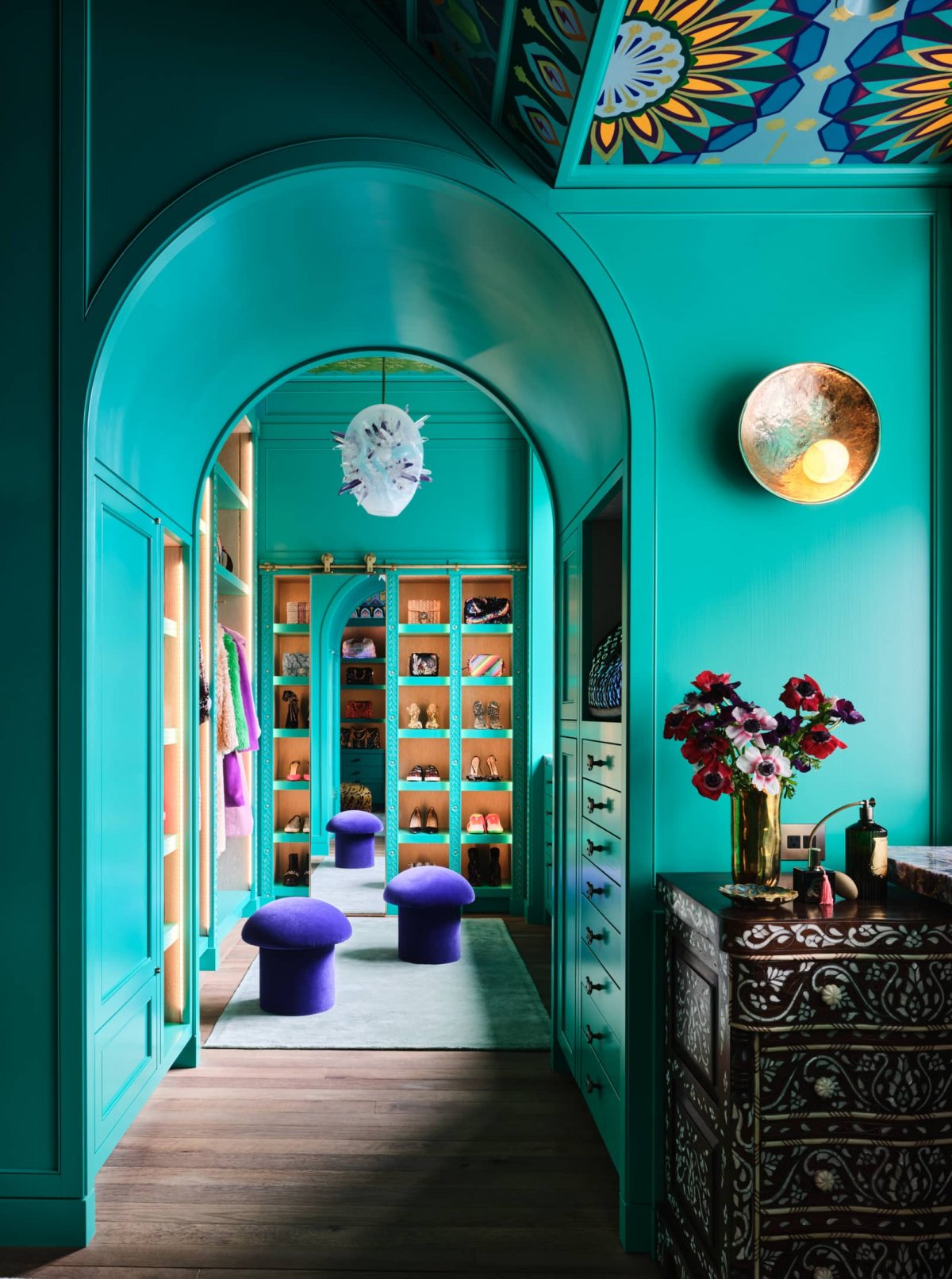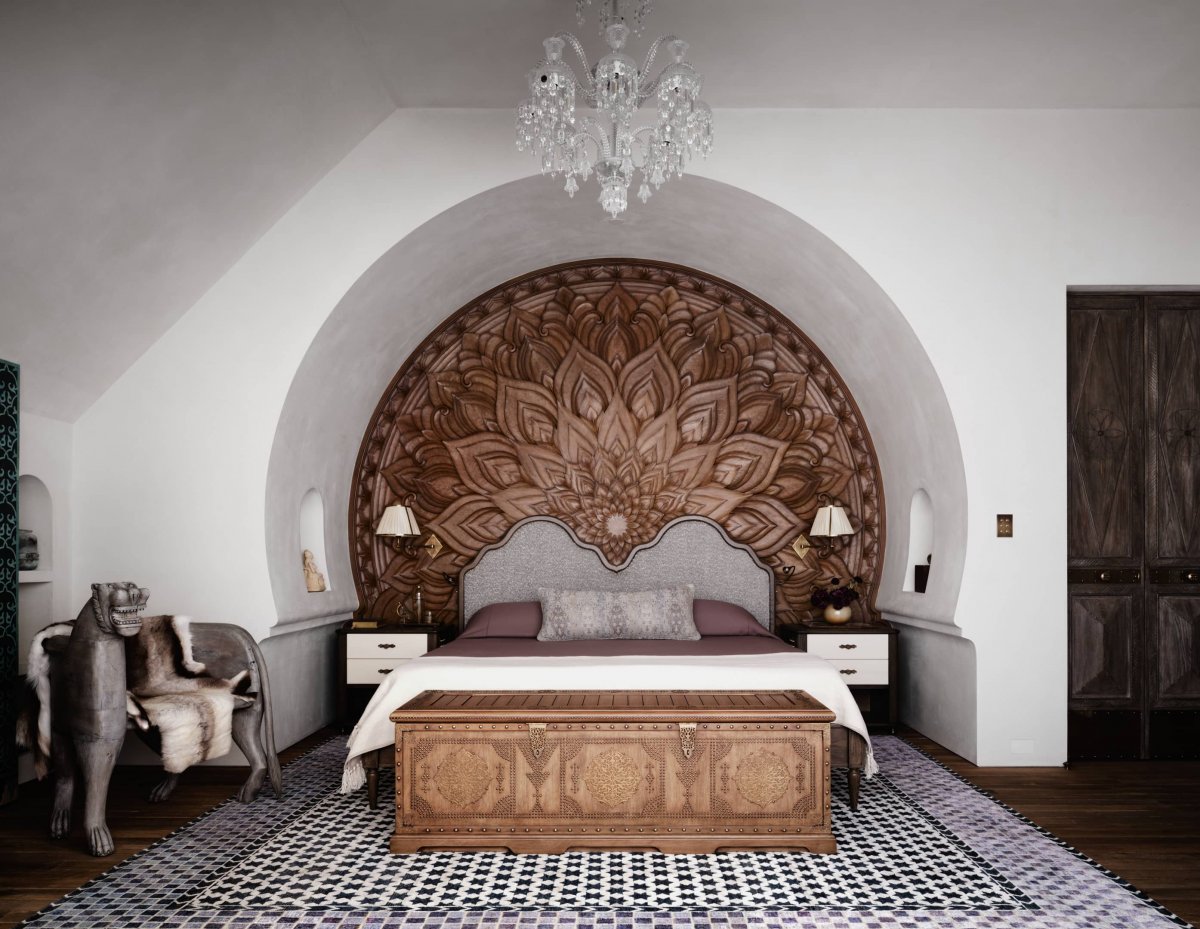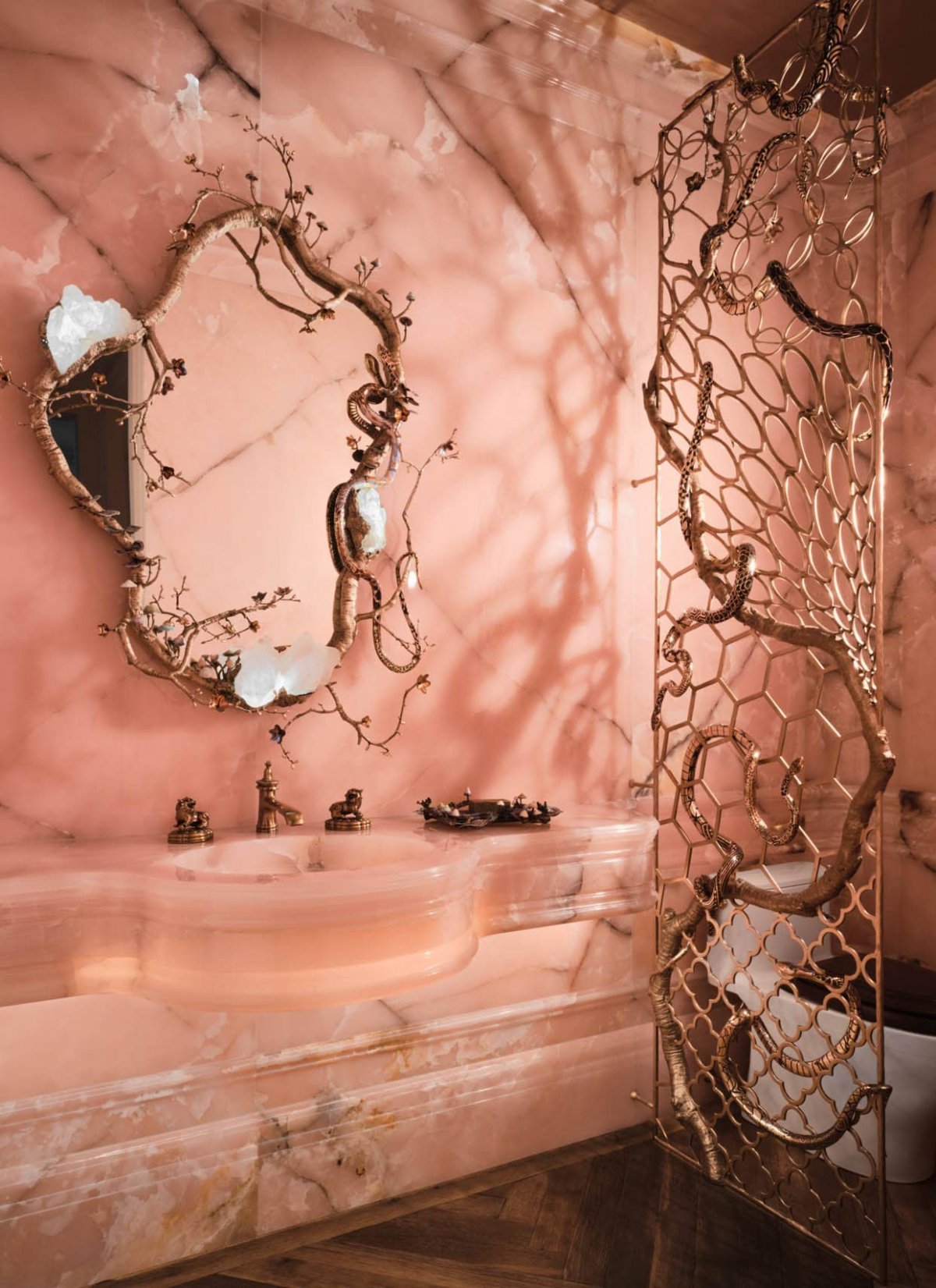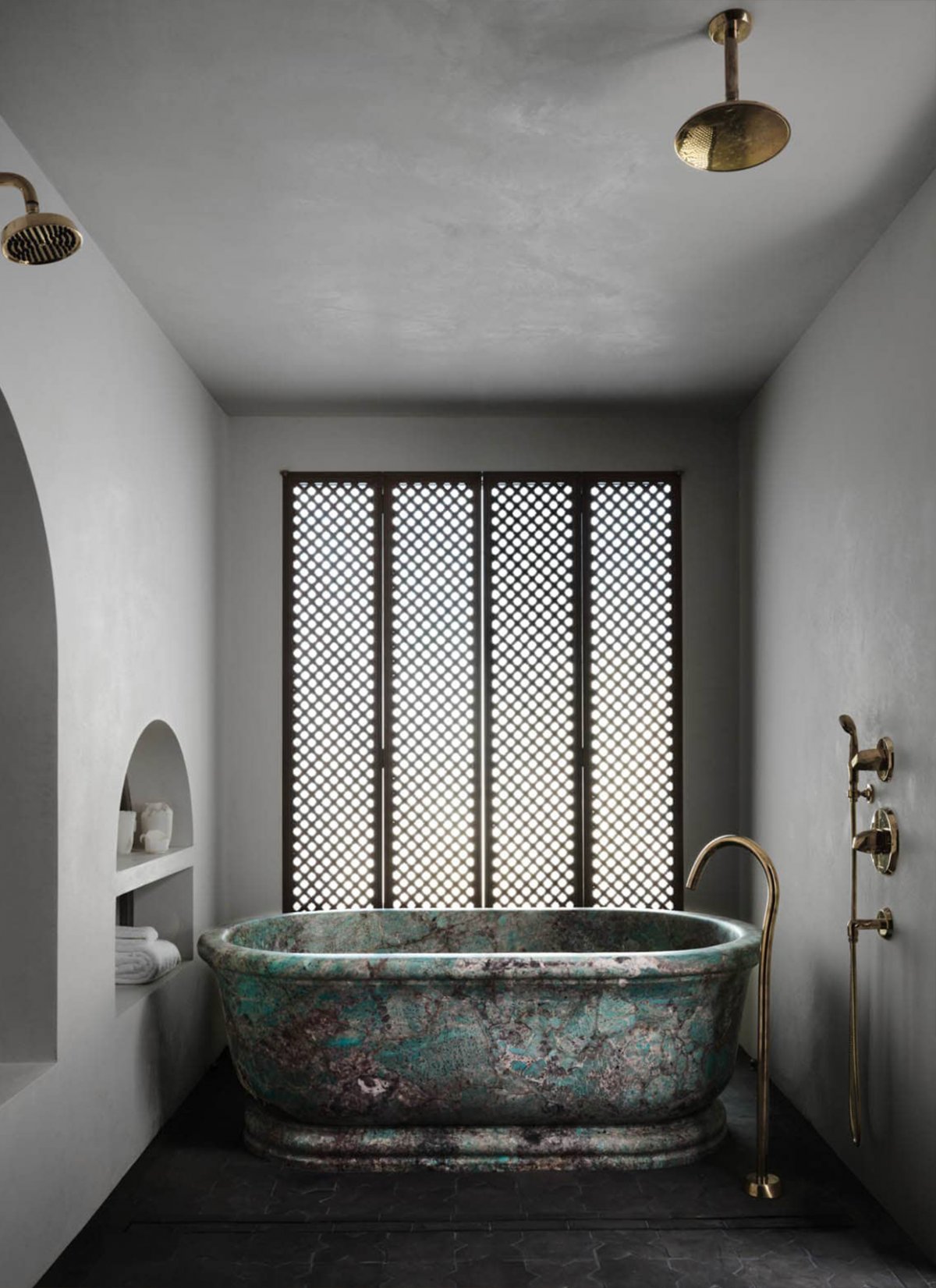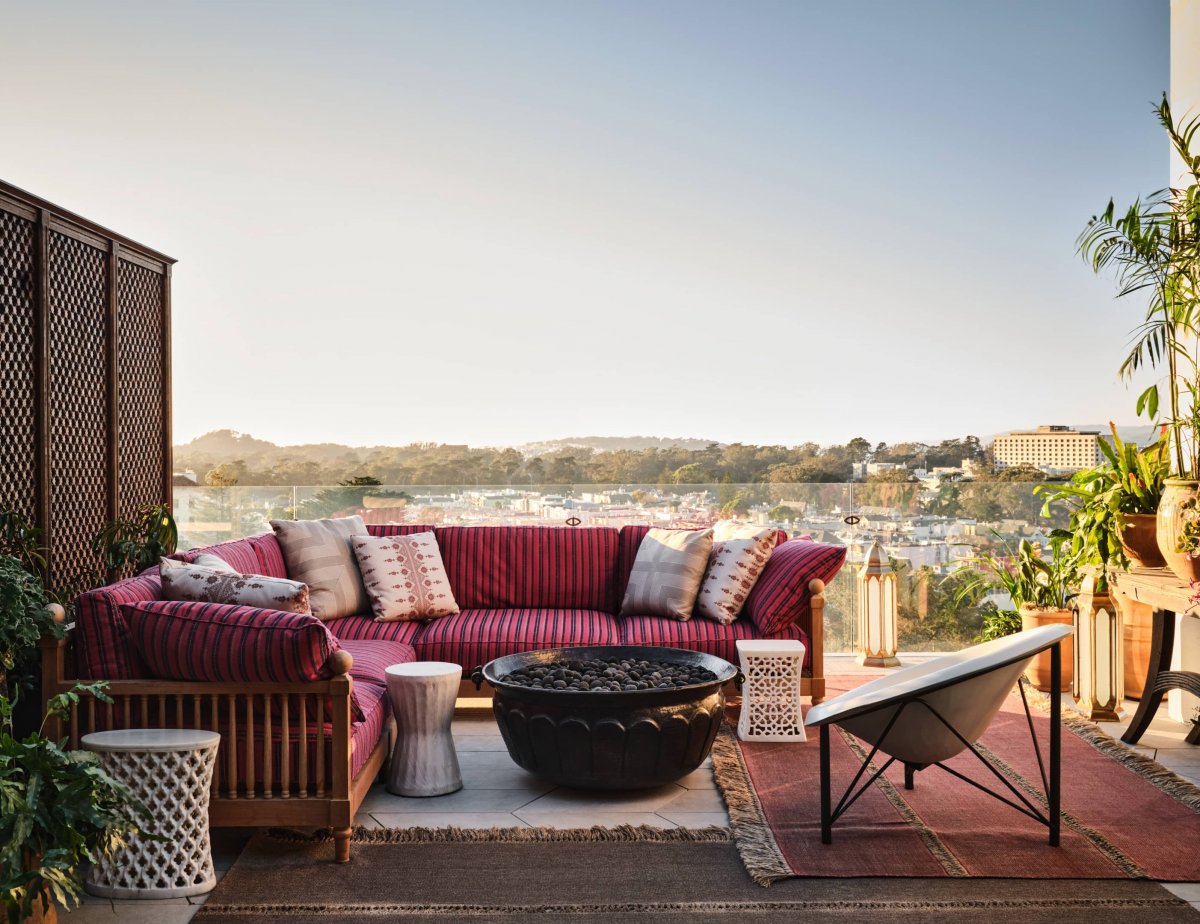
Less florid than San Francisco’s Victorian-era Painted Ladies, the Colonial Revival–style home was designed by architect Edward John Vogel and built in 1897. Its location in the storied Haight-Ashbury district placed the house at the rainbow-bright center of 1960s counterculture, the era when Gene Estribou, a previous homeowner, opened a recording studio on the dwelling’s attic level. The Grateful Dead laid down some of their earliest tracks there, as did Quicksilver Messenger Service, Steve Miller Band, and other mandarins of the San Francisco sound.
Working with Richard Beard Architects, Hollis completely transformed the house, essentially demolishing the interiors and reinventing them with a greater sense of symmetry as well as accommodations for a contemporary kitchen and generous baths and closets. Beard also designed a trim modern addition to the back of the house for the new kitchen and family room on the main level, a bar and screening room below, and bedrooms on the floor above.
“The primary façades—the front and one of the sides—were sacred, so that part of the program was more of a pure restoration,” Beard explains. “For the interior, we didn’t want to ape Colonial Revival or any other period style, but we tried to be sympathetic to the original structure in terms of proportions and materials. Nicole and the clients had already established a singular aesthetic for the house, and our job was to help fulfill the vision.”
Drawing on the combined talents of craftspeople from around the globe, Hollis and her team detailed the rooms with a staggering array of bespoke architectural details and decorative appliqués that nod to the clients’ obsession with rock and roll and hippie drug culture, their fascination with traditional Moroccan design, and their seemingly unquenchable thirst for dazzling color and pattern.
- Interiors: Nicole Hollis
- Photos: Douglas Friedman
- Words: Gina

